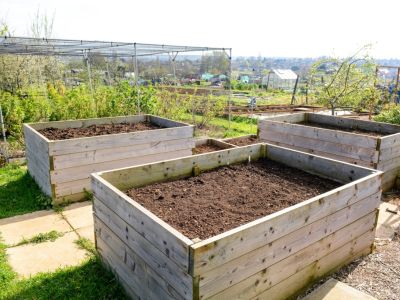If you’ve never heard of stacked garden beds, read on. We’ll give you the ins and outs of stackable raised beds as well as stack garden planters.
Stacking Garden Beds
Raised beds are extremely helpful when your own garden soil isn’t particularly fertile or is difficult to work. By adding a raised bed on top, you can save yourself the trouble of digging down so far in the bed, and give your crops a top layer of rich, well-draining soil. Many vegetables and most annual flowers grow very nicely in 12 to 18 inches (30 to 48 cm) or so of soil. Think radishes, lettuce, chives and poppies for example. If you work the earth down to 10 inches (25 cm.) and put an 8-inch (30 cm.) raised bed on top, you’ll have a happy garden.
Stackable Raised Bed
But other garden crops need more soil for their roots. Root vegetables can need up to 24 inches (61 cm.) of soil, while perennial plants like artichokes and asparagus, as well as tomatoes, bush beans and vining crops like pumpkins can send their roots down to 36 inches (.91 m.). In the past, changing from shallow-rooted crops to deeper-rooted crops required a total change of garden beds. You would have to remove the 8-inch (30 cm.) raised beds altogether and replace them with beds with taller walls. With stacked garden beds, all you have to do is stack on another section of wall or two, then add more soil. Clever stacking joints permit stakes to slide into the joints below, allowing upward construction.
Stack Garden Planters
Stackable raised beds are extremely attractive, constructed of wood that slips together with a joint and pin assembly. That means it’s fast to get them up and you don’t need screws or nails. Each layer of the bed is 8 inches (30 cm.) tall, but you can add a second and even a third layer, depending on your needs. One way to use these is in an arrangement of stack garden planters in different sizes and shapes. You can create a tiered garden that could be a handsome garden focal point with appropriate veggies or flowers in each planter.
